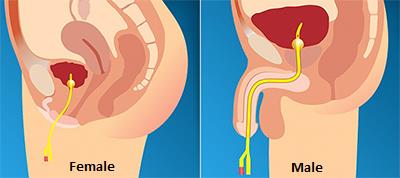
Foley catheter, also known as an indwelling catheter is used to drain urine from the bladder. It is held in place with the help of a water-filled balloon that is inflated inside the bladder. If you have a Foley catheter inside your bladder, you may face some common problems related to the drainage system. There is nothing to get panic about them. There are some things you can do on your own to overcome these issues. If the problem is ongoing and cannot be resolved, you should consult your healthcare provider for further treatment.

If you find difficulty in inserting the Foley catheter, take some lubricant and apply it on the tip of the catheter. Once applied, try inserting the catheter again but do not force it inside. If you are still not able to insert it and you are getting uncomfortable because your bladder is full, consult a healthcare professional immediately.
Sometimes balloon gets deflated but is still stuck in the bladder, leading to difficulty in removing the Foley indwelling catheter. This could be caused by either a faulty catheter or an encrustation issue. You can perform the following steps to try and remove the catheter:
Urine leakage, also known as bypassing, occurs when urine is unable to drain down the Foley catheter. This results in leakage around the catheter. Occasional urine leakage is not abnormal.
Call the healthcare professional immediately when you notice any of the following:
If you see no urine in the drainage bag, check for the following conditions:
If the above steps do not help in restoring the proper urine flow and below given conditions persist, contact your healthcare professional immediately:
Foley catheter should not fall out because it is held in place with the help of a retention balloon that is inflated with sterile water. In some rare situations, if the balloon is faulty, and it deflates, the Foley catheter will fall out. Whether the catheter falls out due to a faulty balloon or you accidentally pull it out, contact the healthcare provider immediately for re-insertion.
Cramping pain and discomfort can be caused due to following reasons:
Cloudy and foul-smelling urine can be a sign of urinary tract infection (UTI). Other symptoms of a UTI are:
If you see any of these symptoms, you should see a doctor immediately. Your doctor might need a urine specimen for further testing. Urine sample should be taken after changing and inserting a new catheter. After test, you might be suggested a course of antibiotics to cure the infection. You can also increase your fluid intake, unless advised otherwise, to help flush the bacteria out from the system.
Blood in the urine is not normal except for in the situations where you have gone through some surgical operations on the bladder or prostate. If you see blood in the urine, you should immediately consult your healthcare provider.
Disclaimer: All content found on our website, including images, videos, infographics and text were created solely for informational purposes. Our content should never be used for the purpose of diagnosis or treatment of any medical conditions. Content shared on our websites is not meant to be used as a substitute for advice from a certified medical professional. Reliance on the information provided on our website as a basis for patient treatment is solely at your own risk. We urge all our customers to always consult a physician or a certified medical professional before trying or using a new medical product.